April 5, 2025 | 18:40 GMT +7
April 5, 2025 | 18:40 GMT +7
Hotline: 0913.378.918
April 5, 2025 | 18:40 GMT +7
Hotline: 0913.378.918
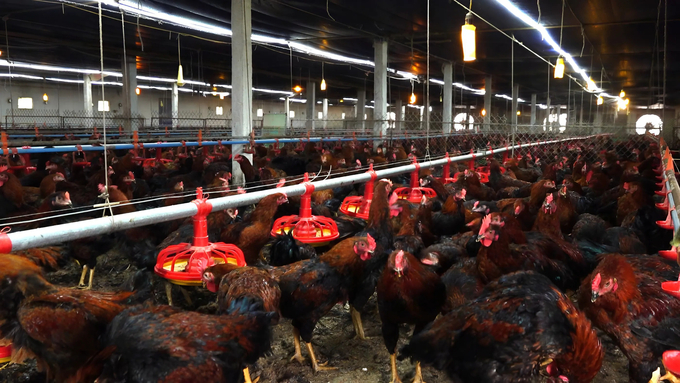
Humid weather poses a high risk of disease outbreaks in animals. Photo: Quang Linh.
The northern region is currently transitioning between seasons, with prolonged humid weather. The unpredictable climate - hot days followed by cold, windy nights with drizzling rain, creates ideal conditions for pathogens (such as mold, bacteria, and viruses) to thrive. Veterinary authorities warn of a high risk of disease outbreaks in livestock, especially poultry, if timely preventive measures are not taken.
Mr. Vu Van Long’s meat chicken farm in Phan Me commune, Phu Luong district, Thai Nguyen province, houses 8,000 hybrid fighting chickens.
At this stage, all the chickens on his farm have reached maturity and are nearly ready for sale. To ensure the highest quality before the purchasing company arrives, Mr. Long has implemented various biosecurity measures to prevent diseases during the humid season. These include regularly disinfecting the farm, adding probiotics to the biological bedding, and supplementing the poultry's diet with vitamins, electrolytes, and beneficial herbs in their feed and drinking water.
“My 8,000 hybrid fighting chickens are now over 100 days old, and the company has scheduled an inspection before purchasing them. If an outbreak occurs, the losses could reach hundreds of millions of Vietnam dong. That is why I prioritize disease prevention because treatment is only a last resort,” Mr. Long shared.
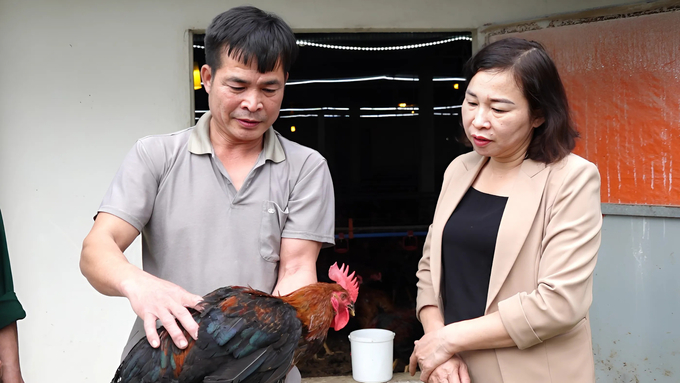
Farmers should regularly monitor the health of their livestock. Photo: Quang Linh.
According to Mrs. Ninh Thi Thang, Deputy Director of the Phu Luong District Agricultural Service Center, during seasonal transitions, animals often experience fatigue, discomfort, reduced appetite, decreased water intake, and slower growth and development. They also become more susceptible to diseases such as avian influenza (A/H5N1, A/H5N6, A/H5N8), Newcastle disease, and diarrhea.
The Phu Luong District Agricultural Service Center advises farmers to properly shield poultry houses, preventing rain and drafts. If temperatures drop suddenly, heating devices should be installed, and bedding materials (such as rice husks or sawdust) should be used to retain warmth.
Farmers should enhance waste collection and clean feeding and drinking troughs. Regular disinfection inside and around poultry houses is essential, along with clearing overgrown vegetation and unclogging drains to minimize habitats for disease-carrying vectors like flies, mosquitoes, and rodents.
"In addition to providing adequate feed and clean drinking water (using warm water on cold days), farmers should supplement poultry diets with electrolytes and probiotics to boost immunity. It is especially important to follow vaccination schedules and proper brooding procedures," Mrs. Thang emphasized.
Herbal remedies with antibacterial properties can help limit the growth of harmful microorganisms, support anti-inflammatory functions, and provide antioxidant benefits. If poultry become ill, farmers can mix herbs such as ginger, turmeric, and garlic into their feed.
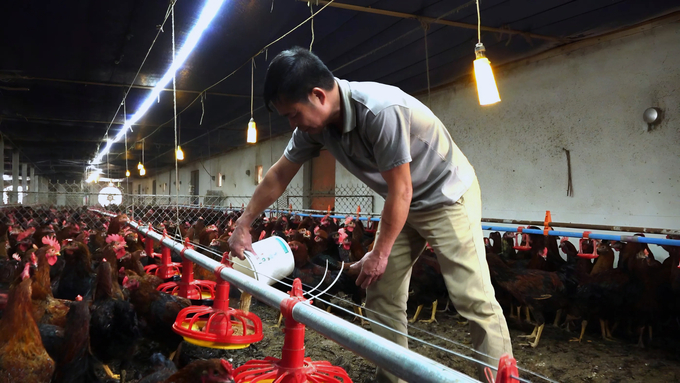
Moisture is the main factor that activates pathogens, so Mr. Long keeps the livestock barn dry and well-ventilated using an industrial fan system. Photo: Quang Linh.
When introducing new breeds, they should be quarantined for 10-15 days before being integrated into the main farming area. Farmers should observe, monitor, and examine animals daily. If any abnormal signs are detected, such as loss of appetite, fever, coughing, rapid breathing, abnormal movement, or preference for lying down. The affected animal should be isolated for further monitoring and examination.
When restocking, it is essential to purchase animals with clear origins from reputable facilities and follow proper quarantine procedures. If any livestock show signs of illness or suspected infectious diseases, authorities and veterinary officers must be informed immediately for sample testing and diagnosis.
Sick animals must not be sold, slaughtered, or transported elsewhere. Farmers should proactively report their livestock numbers to local authorities and veterinary officers to ensure timely disease prevention and control measures.
For livestock and poultry requiring transportation, proper procedures must be followed, and strict compliance with both intra-provincial and inter-provincial transportation quarantine regulations is necessary to ensure disease safety.
The Livestock, Veterinary, and Fisheries Sub-Department of Thai Nguyen province is implementing the first vaccination campaign (March-April 2025) for livestock. At the same time, they are proactively administering supplementary vaccinations for unvaccinated livestock and poultry, newly eligible animals, those that have recovered from illness or have been newly imported, and poultry whose immunity period has expired according to regulations.
Translated by Kieu Chi

(VAN) The product groups affected by 46% tariff include seafood, plastics, rubber, wood, paper, pulp, textiles, footwear, machinery, components, equipment, electronics, etc.

(VAN) Vietnam Agriculture and Nature Newspaper respectfully introduces the full text of the article by General Secretary To Lam titled 'Rising in international integration.'

(VAN) Dr. Ha Cong Tuan, former Deputy Minister of Agriculture and Rural Development: With Vietnam's decades of experience in integrating into international markets, I believe we are well-positioned to respond...
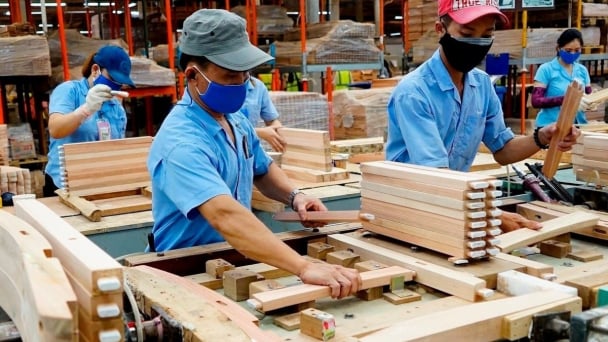
(VAN) Although not easy to implement, the idea is expected to gain support from the Trump administration, while the Vietnam Timber and Forest Products Association considers it a long-term response measure to reciprocal tariff.

During the seminar 'Decoding vaccines and pet care from experts', specialists shared a lot about proper and suitable pet vaccination.
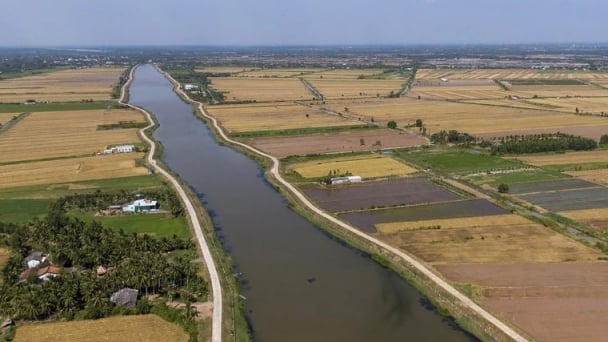
(VAN) Overall, weather conditions for the upcoming agricultural production seasons in 2025 remain favorable, but attention should be paid to regional-scale fluctuations.

(VAN) Economic experts Le Xuân Nghia and Le Dang Doanh analyze the impact of Donald Trump's reciprocal tariff on the Vietnamese economy.